Bright blooms begin with smart flower garden planning. Note how long sunlight touches each corner of the yard, then match plants to full-sun or part-shade slots. Loosen soil with a spade and fold in compost so roots can breathe and feed well.
Simple curves, rings, or zigzag beds anchor color layers and create height contrasts, proving that easy garden design ideas don’t need an art degree. Round things off with tried-and-true beginner gardening tips like mulching and steady moisture to keep flowers thriving.
Picking the Perfect Spot for Your Flower Garden
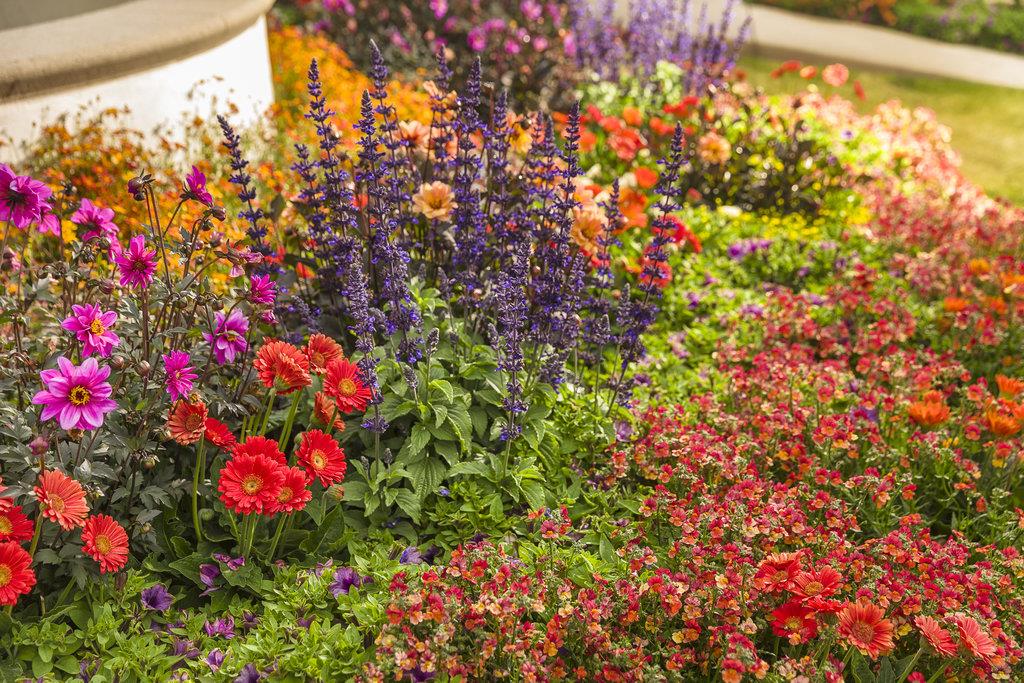
Pick a bed where morning light pours in for at least six hours. That meets most sunlight requirements and keeps petals vivid. A spot receiving three to six hours works for partial-shade perennials that scorch in afternoon blaze.
Map paths so hoses, wheelbarrows and knees reach bed easily, saving backs and time. Tuck the bed into the view line from patios or windows so color greets every glance. Balancing light, access and sightlines nails the ideal flower garden location. These practical garden placement tips keep growth and beauty in sync.
Understanding Sunlight Needs: Full Sun vs. Partial Shade
Morning light drenching a bed for six plus hours equals full sun, perfect for marigolds, zinnias, and lavender. Spaces that collect only three to six hours, often filtered by trees after noon, qualify as partial shade, suiting begonias and impatiens.
Use this flower sunlight guide to walk the yard, noting how long each spot stays bright. Match choices with tags on seed packets. Follow these garden sunlight tips and blooms stay vibrant without heat stress or stretch.
Preparing Your Soil for Healthy Flowers
Healthy blooms begin with smart groundwork. Use a pH test kit to see if lime or sulfur is needed, then spread two to three inches of aged compost plus well- rotted manure for nutrient-rich flower garden soil prep.

Heavy clay? Work in coarse sand or pine bark fines so water slips through while roots breathe. A backyard heap supplies endless garden compost, steadily improving garden soil quality and feeding roots for seasons of color.
Author’s Note: Check out the more accurate Mail-in Lab MySoil Soil Test Kit or the Convenient At-Home Rapitest Soil Test Kit for diagnosing nutrient deficiency and preparing your soil for the planting season!
Selecting the Best Flowers for Your Climate
Choosing flowers for your climate starts with noting summer highs and winter lows. Zinnias and marigolds handle scorching heat and light drought, while pansies stay perky in brisk spring air.
Lavender suits dry Mediterranean like zones with free draining soil. Coneflowers and black eyed Susans also love long sunny days in USDA zones 3 to 9.
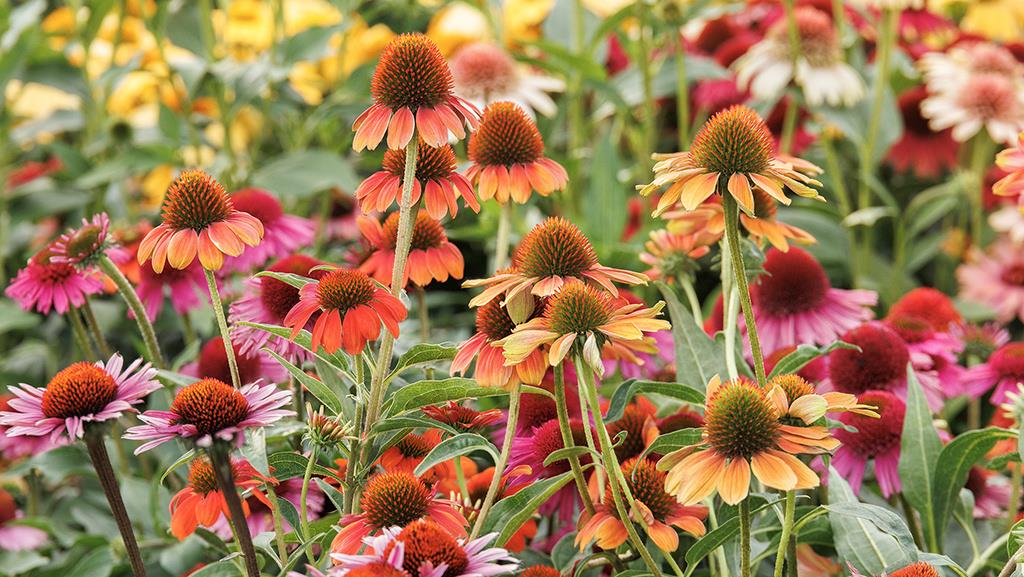
Building a quick chart of hardiness zones simplifies flower garden plant selection and keeps replacements off the to do list. This climate-specific gardening approach boosts bloom time, color and confidence.
Annuals vs. Perennials: Making the Right Choice
Fast bursts of color line up against long-term anchors when discussing annual vs perennial flowers. Annuals sprout, bloom and bow out within one season, giving instant pop and months-long blossoms but needing yearly replanting and steady feeding.
Perennials settle in for several years, cost more upfront yet return each spring, often demanding only a quick fall trim and mulch. When choosing garden plants, blend annuals for immediate flair with perennials for structure and savings. Fans of truly low-maintenance flowers lean on hardy natives like coneflower and sedum.
Easy Garden Layout & Design Tips
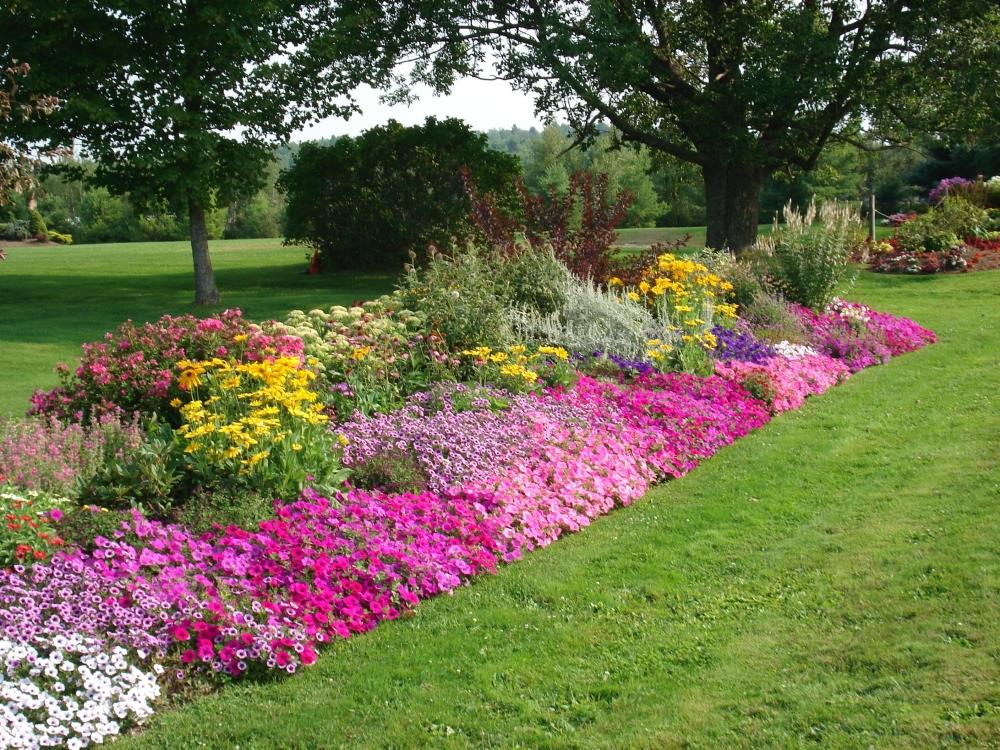
Sketch beds no wider than four feet if accessed from one side, three feet lets arms reach the center from both edges. Arrange plants like a stairstep: tallest at the rear, midsized in the middle, ground huggers out front so every bloom is visible.
Keep paths mulched or paved at least eighteen inches wide to roll a hose cart without trampling roots. Browse garden layout ideas, apply proven flower garden design tips, and lean on easy landscape planning checklists to refine the look.
Color Schemes & Stunning Flower Combinations
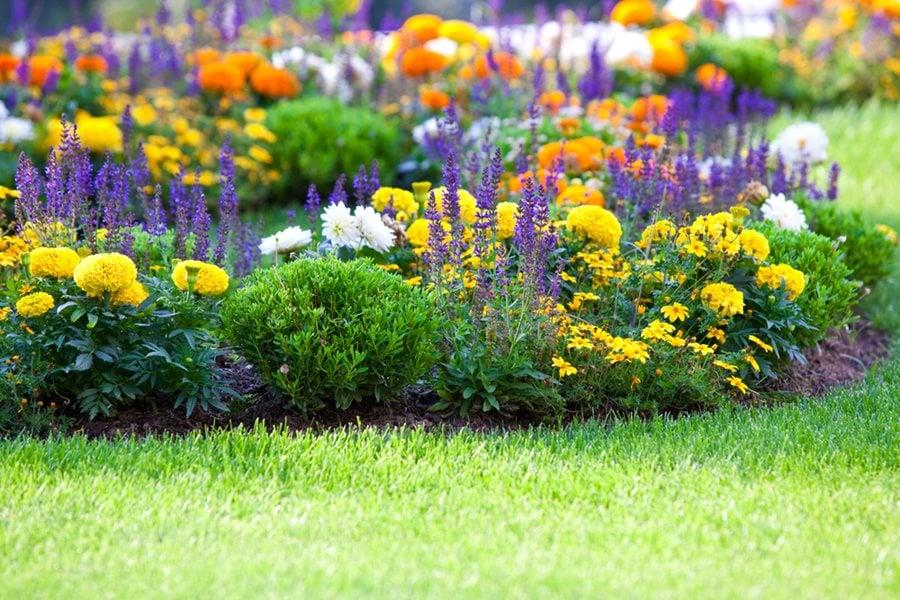
Bold blue salvia next to golden coreopsis turns heads every June, showing how classic flower color combinations make colors pop. Grab a simple color wheel and pick opposites for energy or stick to warm cousins like red, orange, and peach for a calm block of color.
Build layers during your garden color planning by pairing tall spires with trailing pansies so blooms share the spotlight all season. Finish with silver thyme edging, one of those garden aesthetics tips that keeps the whole bed looking tidy.
Planning for Year-Round Flower Blooms
Daffodils and tulips pop first in spring, coreopsis and coneflowers fire up the summer show, asters and hardy mums paint autumn gold, while hellebores keep color alive through winter. Build a year-round flower garden by lining those bloom windows up like puzzle pieces. Mixing these continuous blooming plants means no dull moment.
Pin these seasonal gardening ideas to a quick calendar, then fill any gaps with sturdy perennials that rebound every year. This pattern keeps color rolling season after season, saving extra trips to the nursery later.
Essential Watering & Garden Maintenance Tips
Keep blooms bright by giving your beds an inch of water each week in the early morning, soaking soil six inches deep to build sturdy roots.
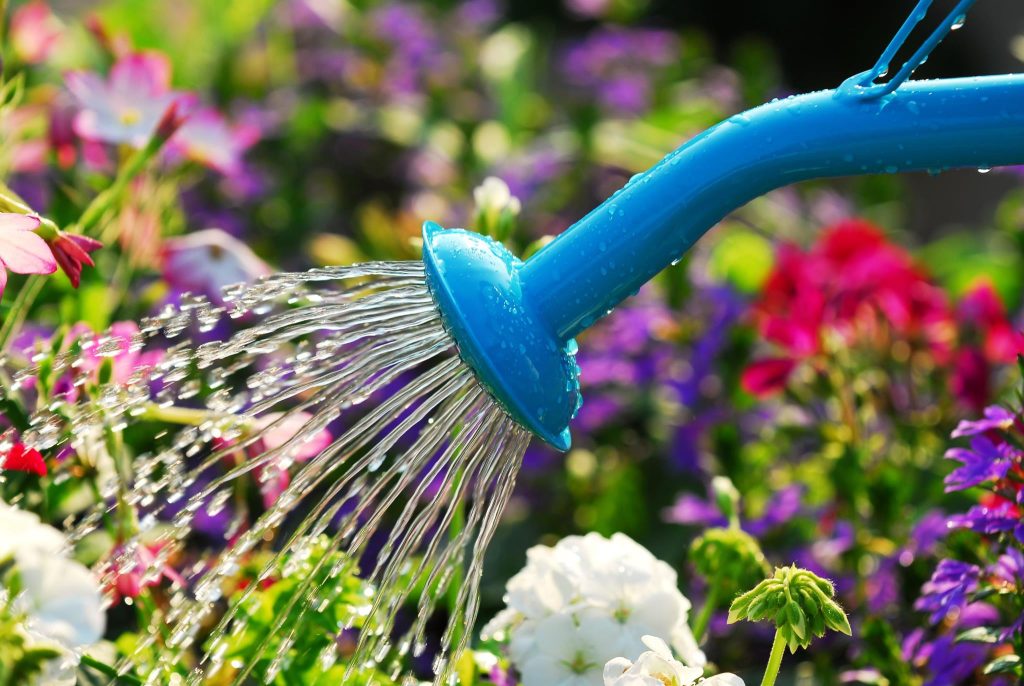
Spread a two to three inch blanket of organic mulch to lock in moisture and block weeds. Snip faded flowers just above a healthy leaf to spur fresh buds and cut disease risk. Walk the beds weekly for flower garden maintenance, noting pests and feeding lightly with compost tea. These flower watering tips sit at the heart of garden care basics.
Dealing with Common Garden Pests & Diseases
Spot chewed petals, sticky leaves, or powdery blotches early and act fast. Smart garden pest management starts with daily walk-throughs, flicking off aphids, and setting beer traps for slugs.
Invite ladybugs and lacewings by planting dill and marigolds, then back them up with neem oil or insecticidal soap for truly natural pest control. For steady flower garden disease prevention, water at the soil line, prune for airflow, and clear fallen debris so fungal spores have nowhere to hide.
Adding Decorative Touches for a Charming Garden
Flagstone paths keep shoes clean and pull attention through beds, while brick or timber borders stop mulch from drifting and frame blossoms.

Tuck small statues or a weathered sundial where sight lines converge to create focal points, but scale pieces to surrounding plants. A shallow birdbath plus a few flat stones entices robins and pollinators, adding gentle motion and sound. Together, these garden decoration ideas use decorative garden elements to instantly enhance garden aesthetics.
Eco-Friendly Gardening: Sustainable Practices for Flower Gardens
Choosing native coneflowers over thirsty exotics slashes watering needs while feeding local pollinators. Layering home-made compost around beds replaces synthetic fertilizer, enriches soil microbes, and cuts landfill waste, ticking another box of eco-friendly gardening.
Finally, a simple rain barrel funnels roof runoff into a soaker hose so summer blooms thrive without tapping the mains, rounding out practical garden sustainability practices that protect wallets and wildlife alike.
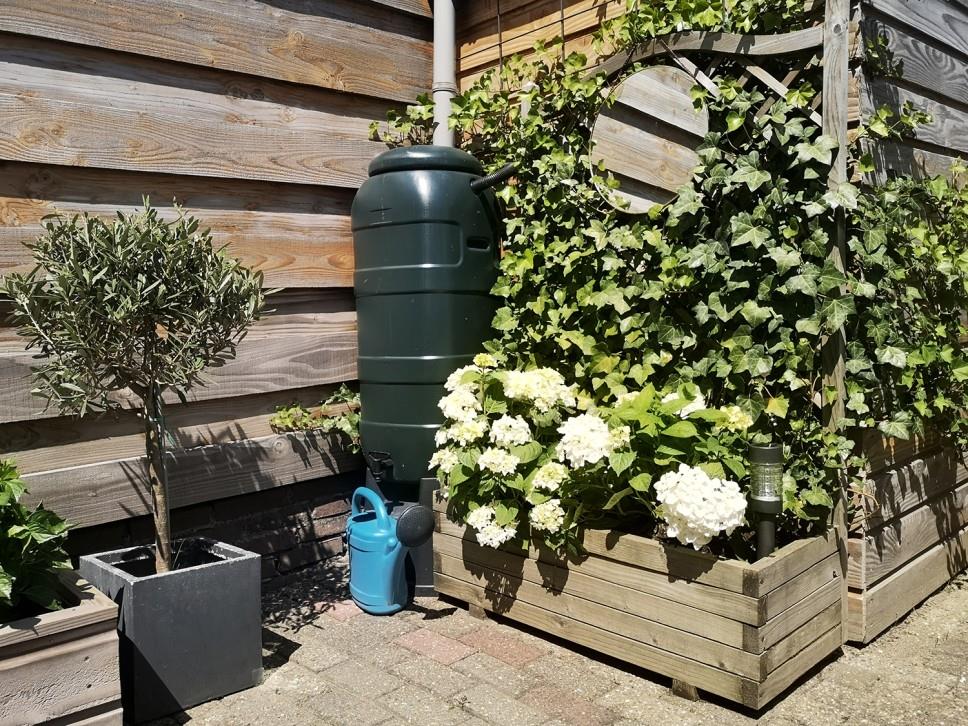
Common Flower Gardening Mistakes to Avoid
Packing petunias shoulder to shoulder might look lush in spring, yet overcrowding robs roots of air and sparks disease, so leave the spread each tag lists. Choosing a shady corner for sun lovers or vice versa means sparse blooms and lanky stems.
Pair plant picks with the yard’s sunlight hours and soil, then match them to the local hardiness zone so heat or frost does not wipe them out. Flag these gardening mistakes to avoid, skip common flower garden errors, and sidestep beginner garden pitfalls for stress-free color.
Conclusion: Enjoy Your Beautiful Flower Garden
Blooming beds do more than decorate the yard. Flower tending also helps to lower stress and brighten moods. The proven benefits of flower gardening stretch from feeding pollinators to giving light daily exercise, helping both plants and people thrive.
A clear map of sun, soil, and spacing anchors successful garden planning, setting up months of color. Keep watering, trimming, and enjoying your garden as fresh petals unfold.
Snap a shot of that first bloom and share your garden wins in the comments below!


